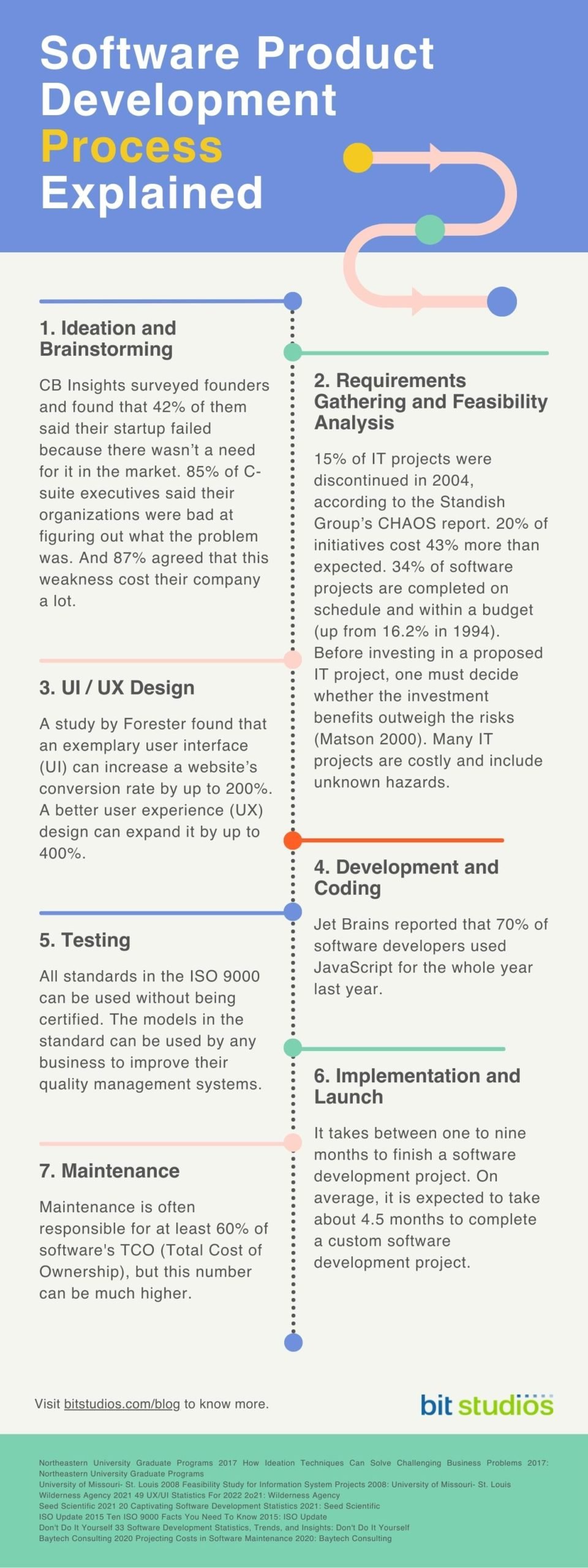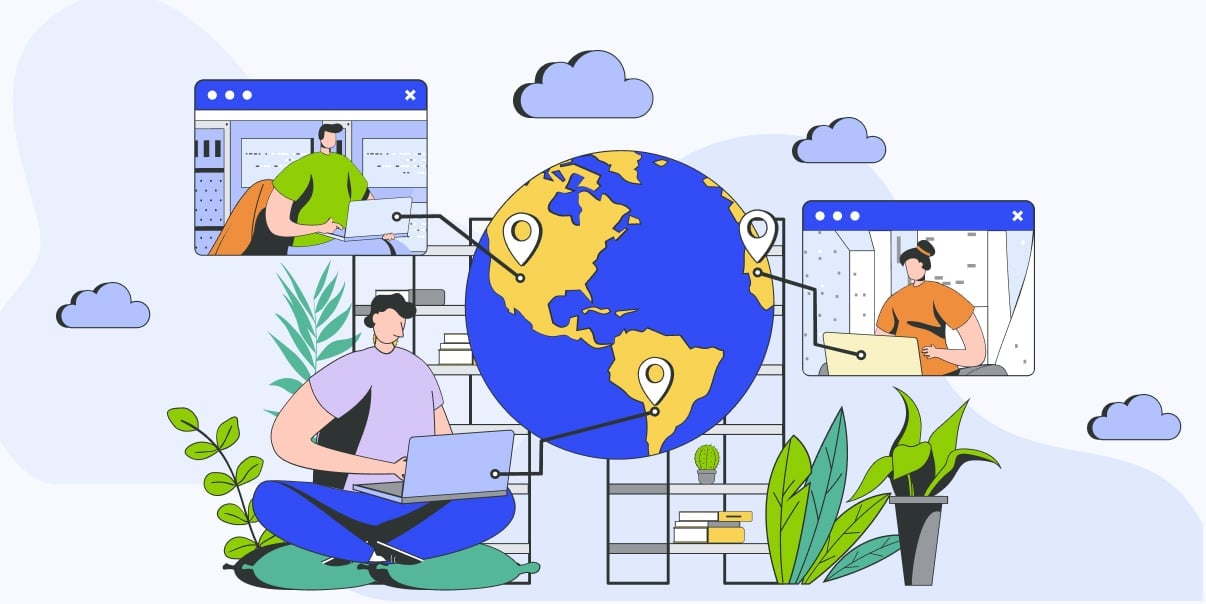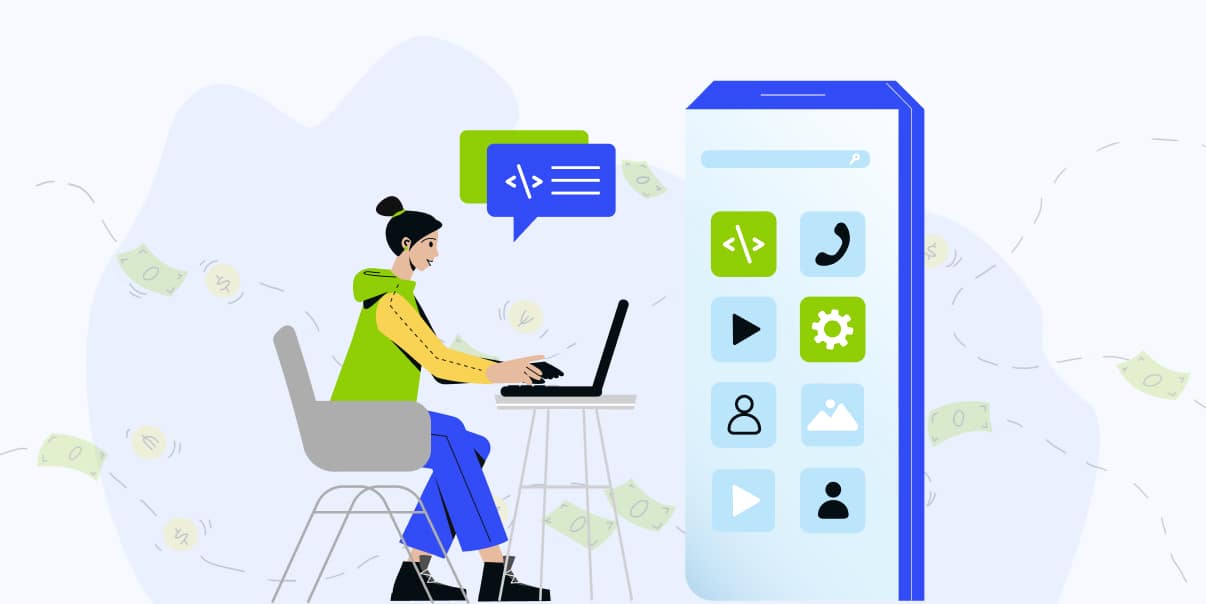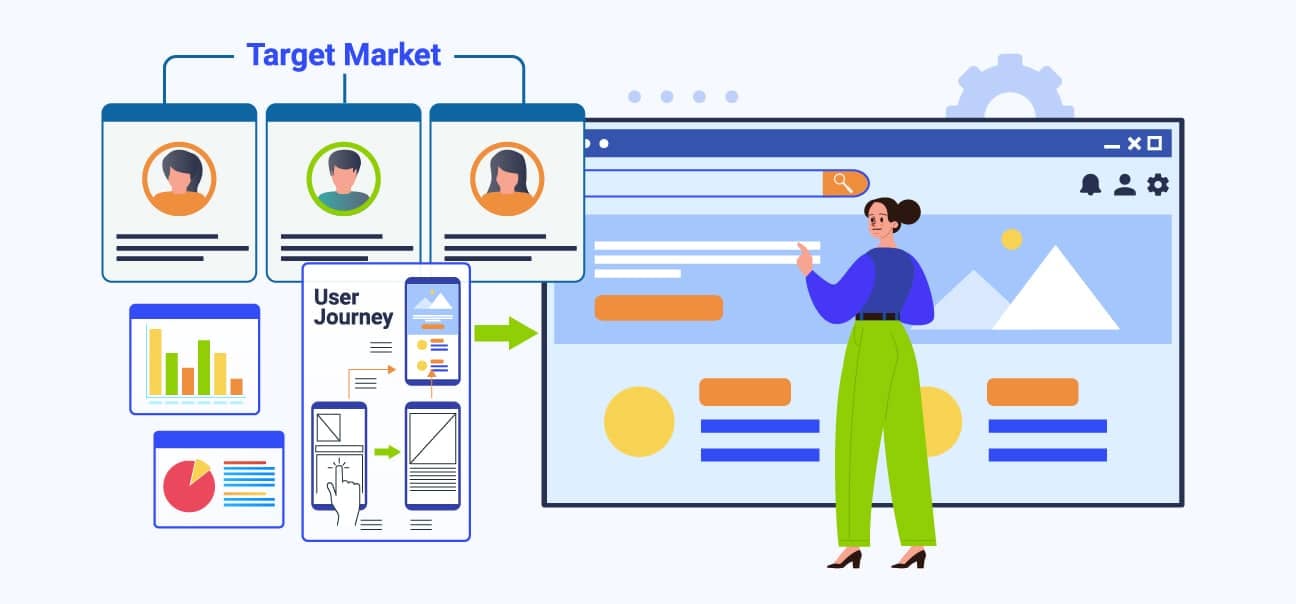A Guide to the Software Product Development Process

Every now and then, you’ll encounter various software products. According to experts, this market will be $1.49 trillion by 2025.
It is for this reason that businesses are leveraging software product development. You can observe the rise of software projects in every company. Some organizations are doing it to improve process efficiency and their internal processes. Others develop software to introduce or market a new product.
But what exactly is software product development? Read this guide now to find out.
What is Software Product Development?

Software product development is the creation of an app or software. Businesses expect their new tool to help them achieve a specific goal. Software product development isn’t exclusive to organizations. Individuals can also do it by themselves.
The thing about developing software is that it is tedious. Indeed, it is an extensive process. There are several stages that you need to go through before you can build an app. Also, you need to be familiar with different tools and frameworks. Knowing software product development methodologies is also a must. Agile and DevOps are some of the methodologies used in development.
Why Does Software Product Development Matter?

Software product development matters. Listed below are the three main advantages:
1. Business Process Optimization
Software product development enables you to optimize your business operations. You can build a tool that can streamline your business processes. For example, you can develop software that will handle your HR records. If you need to improve your revenue generation activities, you may also build an app for that.
2. Offers Competitive Edge
Custom software product development gives you a competitive edge. This is because it empowers you to deliver out-of-the-box solutions. More often than not, these are not possible in off-the-shelf software.-made software products like office productivity suites. But they can be inflexible for businesses with unique requirements. They might end up using only half of the features of the software they are paying for.
Here are BIT Studios, we collaborate well with our clients. It allows us to meet the specific needs of our clients. Custom software development can be tasking, so we need to be meticulous.
3. Cost-effective
Modifying commercial software is difficult. This often leads to businesses letting go of the application. Or they are forced to pay extra costs. Adding new features isn’t free. It’s expensive. Aside from that, companies may experience operational delays.
Software Product Development Steps
The software product development lifecycle involves several software development phases. Depending on project requirements, it may be a repetitive logical process.
Stage 1. Product Idea Generation
Product idea generation is the process of coming up with as many ideas as possible. Its goal is to build an idea pool. This will be the foundation of your software product development strategy.
But before you dive into product idea generation, you need to do market research first. When you study your target market, focus on the pain points. Then brainstorm ideas that could serve as potential solutions.
Stage 2. Requirements and Feasibility Analysis
The requirements and feasibility stage observe several phases. One of these is the user requirements gathering phase.
In the software product development lifecycle, you need to know the business requirements first. This is called the user requirements gathering phase. After this, you do the feasibility analysis.
Now, what’s the feasibility analysis? This step determines the practicality of the software project. It also checks the software development methodologies.
Sometimes, a feasibility analysis may need a technical study. Here, you’ll want to check if you have enough resources or development tools. This does not only involve careful planning. You might also need to use simulations and prototypes.
Apart from the technical study, you might also need to do economic feasibility. This will help you weigh the project’s costs against its benefits.
Stage 3. Product Design
Product design is one of the most crucial software product development stages.
Developers also call this the conceptualization phase. This is where you identify the architecture and the workflow that you will use to build the software.
Stage 4. Product Development and Coding
This is more popularly known as the development phase. Now that you’ve already established the workflow, you can proceed to coding.
Code development goes beyond writing code. Coding will transform the design into a working software program.
Stage 5. Integration and Testing
This stage checks if all the modules and components of your app work as a combined unit.
Integration is vital. If one of the components doesn’t work well with another, your software may crash.
To do the testing, testers may use test drivers or stubs. Both are dummy programs that substitute for the missing components. They often do simulations so developers get a preview of how the software will perform.
As for integration, tools like Citrus, FitNesse, Jasmine, and LDRA, to name a few, are popular.
Stage 6. Test Marketing and Launch
During test marketing, the software is made available to a limited number of users. Usually, it is the beta version that is released.
If the user acceptance testing goes well, the launch or deployment stage follows.
The development stage consists of the following:
- Pre-deployment – This involves manual testing. In this stage, you’ll check the software’s functionalities.
- Deployment – In deployment, the software or app goes live. You have the option to release it to a limited number of users or to your whole customer base.
- Post-deployment– This stage focuses on gathering user feedback and performance monitoring. Some companies may consider this as a separate software product development stage.
Stage 7. Maintenance and Support
Software development projects go through maintenance and support after deployment.
The advantages of software maintenance and support include:
- It fixes bugs after deployment.
- It builds the foundation for better, faster, more efficient future versions.
- It facilitates the migration of legacy software.
- It replaces obsolete technology.
Frameworks of Software Product Development

Product development frameworks are like templates. They guide you on how you’ll execute the development process.
Listed below are two of the most popular product development frameworks.
1. Design Thinking
Design Thinking focuses on the customers’ needs and problems.
You can study marketing trends to understand the end-user’s perspectives and struggles.
Once you have a better understanding of their pain points, the goal is to come up with tons of ideas to solve a problem.
2. Composite New Product Development Framework
The composite new product development framework (NPD) focuses on generating product ideas.
After generating a pool of ideas, you scrutinize each of them and discard those that won’t work. Once you’ve sorted out the most workable concepts, the next step is product validation.
Product validation tests whether the idea is viable or not. There are several ways to do product validation. You can do surveys, product testing, or focus group discussions.
You may also perform competitor analyses and price testing.
Software Product Development Process Explained

1. Ideation and Brainstorming
Ideation and brainstorming are somehow similar to each other.
In brainstorming, two or more people share ideas. Meanwhile, ideation is more of an individual activity.
2. Requirements Gathering and Feasibility Analysis
User requirements gathering is the first step of the software product development process. You must identify your project requirements before you proceed.
Now depending on the resource availability, a feasibility analysis usually follows.
3. UI / UX Design
When a software’s UI and UX work together, it delivers a superb customer experience. How do you make your UI and UX design intuitive? These are through wireframing, typography, interactive prototyping, and knowing your customers’ persona.
4. Development and Coding
In this part, developers do the coding to translate the UI/UX design into actual software or app.
5. Testing
Quality assurance (QA) specialists usually do the testing. They check software product features‘ reliability, performance, and functionality testing.
6. Implementation and Launch
Software implementation happens when software is used to execute a business strategy. For example, if you want to track your sales, you buy a sales tracking tool. This is software implementation.
Now, if your company develops an app or software to help your customers, this is what we call the launch.
7. Maintenance
The maintenance stage is important in the software product development process. Why? First, it ensures the consistent performance of your software product. Second, it allows your product development team to fix bugs. Lastly, you can introduce technical improvements through continuous iterations and new features.

Software Product Development Strategy – Why It’s Always Good to Have a Plan

A software product development strategy or product development roadmap offers plenty of advantages.
The software development life cycle can turn into a complex process, but the project can run smoothly with the right strategy.
Risk Mitigation
Minimized risks can be accomplished across the software product development process via strategic planning, correct resource allocation, and proper assigning of tasks.
Reducing Costs, Maximizing ROI
With a product roadmap firmly established, you can ensure a successful product development process that proceeds smoothly while preventing costly overruns and delays and maximizing your return on investment (ROI).
Easier Collaboration
A software product development strategy provides guidelines on how development team members can collaborate not only with each other but also with third-party partners.
Even if you’re working with cross-functional teams, you can ensure that you’re all on the same page.
Better Communication
Information can be disseminated better while stakeholder or customer feedback can be collected promptly with communication standards set by the product development roadmap, and tools like a software requirements specification document (SRS document).
Why choose BIT Studios in software product development?
BIT Studios specializes in custom software development. It has been selected among the Top Software Development Companies In Texas by Designrush.
Through our UX first rapid prototyping process, we can deliver a prototype in a matter of days, not months. We believe that agile methodology saves time.
To know more about our software product development services, book a meeting today. Our expertise will turn your idea into a reliable software system.
Software Product Development FAQ
What Are the Benefits Of Product Development Software?
You can sum up the benefits in the following:
- It streamlines all processes because it becomes the single hub for every team member.
- It ensures accuracy because everyone is on the same page.
- It promotes consistency since there is only one source of key documents and updates.
- It allows easier management of software development resources through faster task assignments
- It facilitates smoother team collaboration, even with third-party developers.
- It can automate reporting and alerts, making the software development process more efficient.
What Is The Difference Between a Product Design Software And Product Development Software?
Product design software is a design tool. Designers generally use it when sketching, conceptualizing, wireframing, simulating, or prototyping a product.
Meanwhile, product development software helps users complete the product development process.
Product development software is typically a digital solution. Some of the services it offers are:
- Product roadmap planning
- Project management
- Task delegation
- Debugging documentation
- Data management software
Is There A Free Product Development Software?
Yes, there are free product development software options available. Trello is a popular example that offers a free plan. Other free product development software that you can use include:
- Amplitude
- Bitrix24
- ClickUp
- Craftwork Marketplace
- Monday.com
- NextUX (it is still in beta, though)
- OpenProject
- Pendo
- Pie
- Productific
- Productstash
- Tara
- Taskade
- Wrike
- Zoho Sprints
Is Product Development the Same as Software Development?
No, the two are not the same. Product development is the process of creating a new product. It could also mean innovating an existing product. That product could be digital products, hardware, consumer electronics, or even services.
The software development process means developing software for a business or for customers.
Product development may involve professionals from different backgrounds like engineering, marketing, and sales.
Meanwhile, software development involves software developers. Or you can partner with a company that offers software development services.
What Factors Should Be Considered When Creating a Software Product Development Strategy?
When creating a software product development strategy, look at the following:
- Business goals
- Target users
- Budget
- Project timeline
- Technology stack
- Hosting
- Distribution channels
- A plan covering deployment or launch.
We’re BIT Studios!
At BIT Studios we specialize in designing, building, shipping, and scaling beautiful, usable products with blazing-fast efficiency



